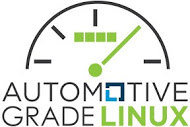diff options
| author | 2019-09-30 10:20:31 +0200 | |
|---|---|---|
| committer | 2019-10-01 11:44:05 +0200 | |
| commit | aae2298b7afa1eff82f49529a659d9e220cac82b (patch) | |
| tree | 6fb24e6ccf2f927933fb302a15f0847a06c13876 /README.md | |
| parent | b7a761f11c7920628b8653a3ffda2e8644f6f6b8 (diff) | |
Sync container userid/group ids with those of host userHEADmarlin_12.91.0marlin_12.90.1marlin_12.90.0marlin/12.91.0marlin/12.90.1marlin/12.90.0lamprey_11.92.0lamprey_11.91.0lamprey/11.92.0lamprey/11.91.0koi_10.93.0koi_10.92.0koi_10.91.0koi/10.93.0koi/10.92.0koi/10.91.0jellyfish_9.99.4jellyfish_9.99.3jellyfish_9.99.2jellyfish_9.99.1jellyfish/9.99.4jellyfish/9.99.3jellyfish/9.99.2jellyfish/9.99.1icefish_8.99.5icefish_8.99.4icefish_8.99.3icefish_8.99.2icefish_8.99.1icefish/8.99.5icefish/8.99.4icefish/8.99.3icefish/8.99.2icefish/8.99.19.99.49.99.39.99.29.99.18.99.58.99.48.99.38.99.28.99.112.91.012.90.112.90.011.92.010.93.010.92.010.91.0master
This changeset updates the Docker container creation script to make it
so that the 'devel' user has the same userid/guid as that of the host
user running the script (code courtesy of Sebastien Douheret).
This simplifies workflows and is less error-prone (no need to manually
change ownerships or add the host user to the custom 'devel' group).
The README is also updated with a few formatting fixes as well as a
mention that we now use Debian 10.
Bug AGL: SPEC-2842
Change-Id: If6878e2cd7a98107753b6c16fe16d40cbf4bf5ab
Signed-off-by: Vincent Rubiolo <vincent.rubiolo@iot.bzh>
Diffstat (limited to 'README.md')
| -rw-r--r-- | README.md | 19 |
1 files changed, 13 insertions, 6 deletions
@@ -4,13 +4,14 @@ This repository contains some scripts to generate a Docker image suitable for AGL workers. -The AGL worker image is a Docker image based on Debian 8 and contains the necessary tools +The AGL worker image is a Docker image based on Debian 10 and contains the necessary tools either to build platform images based on Yocto, or run the AGL SDK to build AGL Applications outside of Yocto process. ## Requirements -Have a recent docker daemon (>=1.10) installed. All the setup is done inside the image so no other tool is required on the host. +Have a recent docker daemon (>=1.10) installed. All the setup is done inside the +image so no other tool is required on the host. ## Usage @@ -69,9 +70,13 @@ This image can then be exported to a tarball and/or pushed to a Docker registry. To publish the image, there are 2 ways: using a docker registry OR exporting to a tarball. -In the first case, using the image is very easy as it can be pulled directly from the registry host using a 'docker pull' command. The main issue with this method is the efficiency: images are not compressed and it takes ages to transfer overlays to the client host. +In the first case, using the image is very easy as it can be pulled directly +from the registry host using a 'docker pull' command. The main issue with this +method is the efficiency: images are not compressed and it takes ages to +transfer overlays to the client host. -In the second case, the efficiency is better but requires to transfer the image archive manually. On the client host, loading the image is as simple as: +In the second case, the efficiency is better but requires to transfer the image +archive manually. On the client host, loading the image is as simple as: ``` # wget -O - <archive_url> | docker load @@ -79,14 +84,16 @@ In the second case, the efficiency is better but requires to transfer the image ### Instantiate a container -The following command located in contrib/ subdir can be used as **an example** to instantiate a container: +The following command located in contrib/ subdir can be used as **an example** +to instantiate a container: ``` # contrib/create_container 0 ``` -To instantiate more containers on the same host, the instance ID passed as argument must be different from the previous ones. +To instantiate more containers on the same host, the instance ID passed as an +argument must be different from the previous ones. **PLEASE ADJUST THE SCRIPT create_container TO FIT YOUR ENVIRONMENT AND YOUR NEEDS** |
